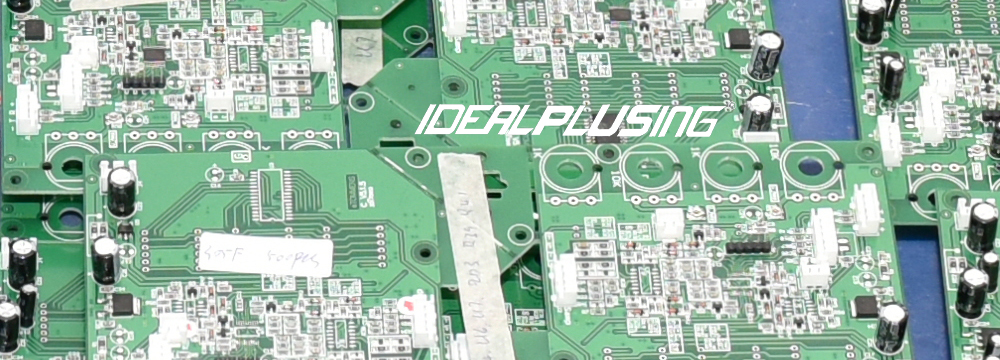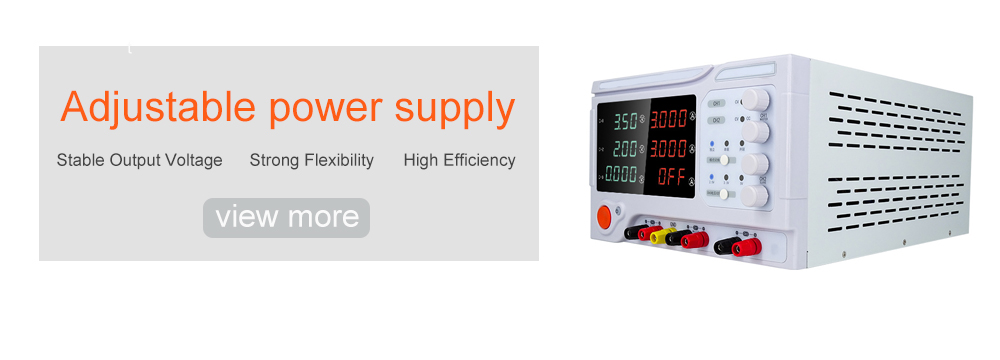An adjustable power supply is a power supply device that can provide a stable output voltage and current. The current regulation is achieved through a series of electronic circuits and control algorithms.
The principle of an adjustable power supply is to achieve regulation by changing the output voltage or current of the power supply. Specifically, an adjustable power supply usually contains a control circuit inside, which can adjust the output voltage or current of the power supply according to the set adjustment signal or feedback signal.
The control circuit can use a variety of different technologies and algorithms to achieve regulation, such as pulse width modulation (PWM), pulse frequency modulation (PFM), etc.

The output voltage or current of an adjustable power supply can be controlled by an external regulator or microcontroller. The regulator or microcontroller can set a target voltage or current value and compare it with the actual output voltage or current.
Based on the comparison result, the regulator or microcontroller will output a control signal, which will adjust the output voltage or current of the adjustable power supply to reach the target value.
In addition, the adjustable power supply can also contain some protection circuits, such as overcurrent protection, overvoltage protection, etc., to ensure the safety of the power supply and the powered device.
When the output current or voltage of the power supply exceeds the safe range, the protection circuit will trigger the corresponding protection mechanism, such as cutting off the output of the power supply or reducing the output voltage, to prevent the current from being too large or the voltage from being too high from damaging the equipment.
The current regulation of the adjustable power supply can be mainly divided into the following steps:
Input signal acquisition
The current regulation system of the adjustable power supply first needs to collect the output current signal of the power supply through the acquisition circuit. These signals can be analog signals or digital signals, depending on the design and implementation of the adjustable power supply.
Signal processing
The collected current signal will be processed by the signal processing circuit, such as amplification, filtering, comparison and other operations. These processes can be preliminary processing of the signal to facilitate subsequent regulation and control.
Regulation circuit
The regulation circuit is the core part of the adjustable power supply. It compares the collected current signal with the preset reference value to generate an adjustment signal. The adjustment signal is usually a control voltage or control current, which is used to control the output current of the adjustable power supply.
Power device control
The power devices (such as transistors, MOSFETs, etc.) in the adjustable power supply are used to control the output current of the power supply. The regulating signal generated by the regulating circuit regulates the output current by controlling the switching state of the power device. Specifically, the regulating signal controls the on and off time of the power device, thereby changing the size of the output current.
Feedback control loop
The adjustable power supply usually contains a feedback control loop for real-time monitoring and regulation of the output current. The feedback control loop can be an open-loop control system or a closed-loop control system, which is selected according to the specific application requirements. In an open-loop control system, the regulating signal directly controls the size of the output current; in a closed-loop control system, the regulating signal is adjusted in real time according to the output current fed back to ensure the stability and accuracy of the output current.
Protection circuit
In order to protect the safety of the adjustable power supply and the powered equipment, the adjustable power supply usually contains some protection circuits (such as overcurrent protection, overvoltage protection, etc.).
When the output current exceeds the preset safety range, the protection circuit will trigger the corresponding protection mechanism, such as cutting off the switching state of the power device, reducing the output voltage, etc., to prevent damage to the equipment due to excessive current or excessive voltage.
In summary, the current regulation of the adjustable power supply is mainly achieved through multiple links such as collecting output current signals, processing signals, comparing and adjusting, controlling the switching state of power devices, feedback control, and protection circuits.
These links work together to ensure that the adjustable power supply can provide stable and reliable output current to meet the needs of various application scenarios.
In practical applications, it is necessary to select a suitable adjustable power supply according to specific needs, and consider its performance parameters, accuracy, stability and other requirements. In addition, it is also necessary to pay attention to the use environment and conditions of the adjustable power supply, and comply with relevant safety regulations and operating procedures to ensure the normal operation and safety of the adjustable power supply.






